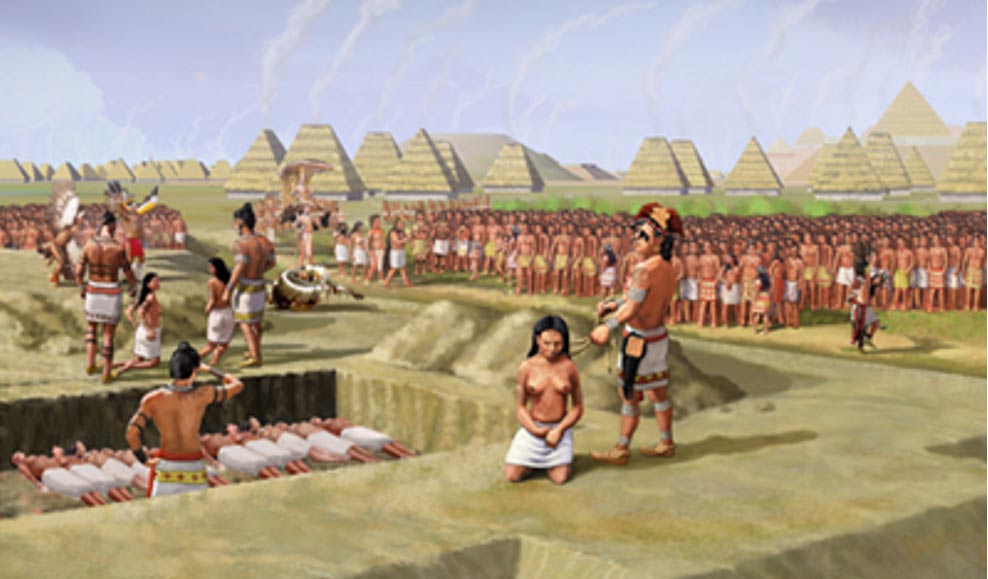Sacrifice victims at Cahokia were locals not foreign captives
Researchers had speculated that victims of human sacrifice found at the Native American site Cahokia in Illinois were brought in from outside the area, perhaps as tribute. But a new analysis of the element strontium in the victims’ teeth shows they were mainly local—especially the 39 people brutally killed and unceremoniously dumped in a mass grave.
From about 700 to 1400 AD, Cahokia was apparently one of the biggest cities in the world. At its height it had 15,000 residents. The complex society at Cahokia, part of the Native American Mississippian Culture, prospered in the fertile lands off of the Mississippi River across the river from modern St. Louis, Missouri.
One mystery the city presents is a burial mound called Mound 72 found in the 1960s that contained more than 270 bodies, almost all women, almost all victims of human sacrifice, says an article at Western Digs.

An 1887 drawing of the Monks Mound at Cahokia, by William McAdams (Wikimedia Commons)

Monks Mound today: the largest earthworks structure in North America and the largest pyramid north of Mexico. Monks Mound is a different mound than Mound 72, where the human sacrifice victims were found buried. (Photo by Skubasteve834/Wikimedia Commons)
The people in Mound 7 were buried in large pits sometime between 1000 and 1100 AD. Many are laid out in neat rows and had little sign of trauma. Researchers speculate they died of strangulation or blood-letting. However, Western Digs reports that the mound also contained the remains of 39 men and women, which showed signs of physical violence.
- The Rise and Fall of Cahokia: Did Megafloods Spell the End of the Ancient Metropolis?
- Cahokia: The Largest Mississippian Archaeological Site on the North American Continent
- Ceremonial Road Discovered in the Ancient City of Cahokia

The people of Cahokia. Illustration at Cahokia Mounds State Historic site (emilydickinsonridesabmx / flickr)
These people too were local, Slater and his group’s research reveals. The people in the brutalized group appear different morphologically from other people buried at Cahokia but resemble each other, suggesting they were from an isolated community.
A mass grave called Feature 214 in Mound 72 had 24 bodies carefully arranged in two layers buried around 1000 AD. Feature 105, from about 50 years later, had more than 50 bodies neatly laid out. But Feature 229 had one layer of 15 men and women laid to rest on cedar litters, and the lower mass grave of the 39 men and women who were mutilated and then unceremoniously dumped into the grave.
Strontium occurs naturally in varying amounts in groundwater. By measuring the amount of strontium atoms in people’s teeth, the researchers can tell roughly where they were from. Analysis of the teeth of 109 people from Cahokia showed a majority of these victims of sacrifice were local. A small percentage of the people buried neatly were not local, but 100 percent of the 39 brutally slaughtered were from Cahokia and environs or were from a place with similar strontium signature, the researchers report (there is a fee to read the article) in the American Journal of Physical Anthropology.
Featured image: Mound 72 mass sacrifice of 53 young women at Cahokia (Wikipedia)
By Mark Miller



















